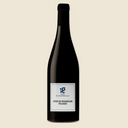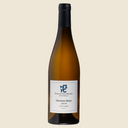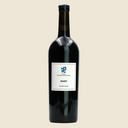Organic & biodynamic wines — lovingly sourced from small French vineyards.
- Free Shipping on Orders Over $149
- Authentic French Wines
- Easy and Secure Checkout
- Sourced from Small Sustainable Vineyards
- Free Shipping on Orders Over $149
- Authentic French Wines
- Easy and Secure Checkout
- Sourced from Small Sustainable Vineyards
- Free Shipping on Orders Over $149
- Authentic French Wines
- Easy and Secure Checkout
- Sourced from Small Sustainable Vineyards
Côtes du Roussillon Villages A.O.C. 2014
Wine Details & Winemaking
Alcohol: 13.5%
Vintage: 2014
Size: 750ml
Closure: Cork
Varieties: 60% Carignan, 20% Grenache, 15% Syrah, 5% Lladoner Pelut
Structure: Full-bodied
Terroir: The vineyards of Domaine Paul Meunier Centernach are located in various communes of the Vallée de l’Agly, including Maury, St Paul de Fenouillet, Lesquerde, and St Arnac. These vineyards are spread across elevations ranging from 130 to 300 meters, where the diversity of soils—including granite arenas, clay-limestone alluviums, and black schists—provides an ideal environment for the grape varieties grown here. The region’s unique terroir and its cool altitudes help to preserve the freshness of the 2014 vintage, which stands out for its exceptional clarity and elegance.
Harvest: The grapes for Côtes du Roussillon Villages 2014 are hand-harvested from vines ranging in age from 10 to over 100 years old. This mix of old and young vines allows for both concentration and finesse in the final wine, with the older vines contributing depth and complexity and the younger vines bringing freshness.
Winemaking: The wine is fermented and aged separately by grape variety and parcel, with a combination of oak barrels and stainless steel tanks used. This allows each variety and each terroir to express itself fully before the final blend is assembled after one year of aging. The winemaking approach is minimal, with no chemical inputs, ensuring a pure expression of the grapes and the region.
Tasting Notes / Food Pairing & Cellaring
On the Nose: The wine presents an inviting bouquet of ripe red fruit, notably blackberries and raspberries. Alongside the fruit, there are earthy undertones of wild herbs, hints of tobacco, and subtle spicy nuances that enhance the complexity. The wine’s aromatic profile is further enriched by a delicate smokiness, which adds depth and intrigue.
On the Palate:
The wine is full-bodied with a harmonious balance of smooth tannins and refreshing acidity. On the palate, it reveals layers of dark fruits, such as black cherries and plums, with a rich mouthfeel that is complemented by tobacco and earthy mineral notes. A gentle touch of black pepper and liquorice comes through on the finish, giving the wine a satisfying and lasting conclusion.
Pairing & Cellaring: Côtes du Roussillon Villages 2014 is an excellent companion for hearty dishes. It pairs wonderfully with grilled meats, such as lamb or duck, and also works beautifully with slow-cooked stews. It complements aged cheeses like Manchego or a selection of hard cheeses. This wine has long-term cellaring potential, allowing it to develop more depth and complexity over time.

Côtes du Roussillon Villages A.O.C. 2014
You May Also Like
Frequently Asked Questions
Older vines, which can be over 100 years old, produce fewer grapes but with more concentrated flavours, adding depth and complexity to the wine.
Younger vines, on the other hand, contribute brightness and freshness. Combining the fruit from both ensures a harmonious balance of finesse and intensity in the final wine.
The region’s soils—granite arenas, clay-limestone alluviums, and black schists—each bring unique qualities to the wine.
Granite enhances minerality and freshness, clay-limestone adds structure and balance, and black schists contribute depth and complexity.
Vinifying grape varieties and parcels separately allows each to express its unique characteristics.
The use of both oak barrels and stainless steel tanks during aging further enhances this expression, with barrels adding complexity and texture and stainless steel preserving freshness.







